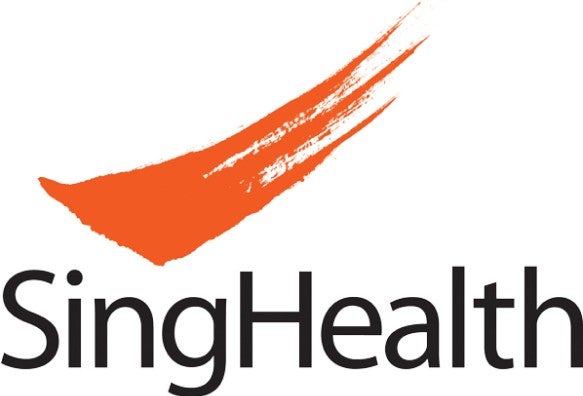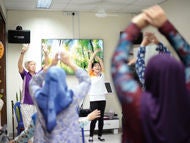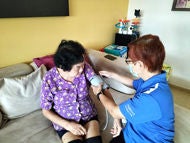
At KK Women’s and Children’s Hospital (KKH), MAGEC (MAGnetic Expansion Control) rod implants are helping children with severe early-onset scoliosis to achieve spinal correction with less pain and fewer surgical procedures.
Comprising magnetically-controlled, implantable rods and an external remote control, the MAGEC growing rods are a new surgical treatment used to guide spinal growth in young children with scoliosis.
Scoliosisopens in a new tab is characterised by an ‘S’ or ‘C’-shaped lateral curvature of the spine, commonly accompanied by a degree of rotation leading to a three-dimensional deformity. There may be a curving of the body to one side when viewed from the back, and asymmetry of the shoulder or scapulae height and waistline. The condition is seven times more common in females than in males.
While the incidence of scoliosis is highest amongst adolescent children (aged 10 to 16 years) – comprising 70 to 80 per cent of newly diagnosed cases at KKH – idiopathic scoliosis can also present in younger age groups: infantile (<3 years old) and juvenile (4-9 years old).
These subtypes of scoliosis are considered to be ‘early onset’ due to the child’s young age, and where the curvature of the spine is severe (exceeding a Cobb angle of 40˚), special considerations for surgical treatment are required, as the child has many years of growth remaining.
Non-invasive magnetic spinal distraction
When a child undergoes spinal correction via MAGEC rod implantation, first a single or dual MAGEC rod is implanted into the spine. Three months after implantation, spinal distractions will commence in the outpatient clinic setting.
First, the magnet in the MAGEC rod implant is located (Figure 1A). Then, an external remote control device is lined up with the magnet, and used to magnetically “grow” or lengthen the implant to align the spine and reduce its curvature (Figure 1B). Some discomfort or a stretching sensation is expected during the process, which is generally well tolerated.

The novel MAGEC rod implant method is a boon for the young child with severe early-onset scoliosis, as up to recent years, the traditional surgical option and standard of care utilised stainless steel rod implants which required lengthening every six to nine months, in tandem with the growth of the child’s spine. Each lengthening procedure required the child to undergo an invasive surgery under general anaesthesia.
In contrast, MAGEC rod implantation allows for non-invasive gradual distraction of the spine (from three to five millimetres at a time) at shorter time intervals of up to three minutes per session, without a need for general anaesthesia and hospitalisation. To keep up with the growth of their spine, younger patients can expect to return to the outpatient clinic for spinal distraction as frequently as once a month.
Following each distraction, the patient can immediately resume their daily activities, such as attending school. They are advised against strenuous activities and contact sports, and should not undergo magnetic resonance imaging. Children who are eligible for intervention via MAGEC rod implantation include those who are diagnosed with severe early-onset scoliosis (Cobb angle of 50˚ or more) and are at risk of further curve progression.
At present, two paediatric patients in KKH have undergone MAGEC rod implantation over the last two years; both have made good progress and remain pain-free. Their treatment processes are described as follows:


The future of scoliosis management
Since the use of MAGEC rod implantation was approved by the United States Food and Drug Administration in 2014, there have been multiple publications regarding the efficacy of the method in comparison to its traditional counterpart1.
Preliminary short-term results have showed promise and has potential in routine clinical practice. Additionally, in spite of the larger expense at the start of therapy, the cost of magnetically-controlled growing rods becomes comparable to traditional systems by a duration of four years2. More is to be learned about the merits and safety considerations of the MAGEC rod as patients are followed up for longer periods of time.
REFER A PATIENT Healthcare professionals can refer paediatric patients to the Department of Orthopaedic Surgery at KKH for tertiary assessment of their scoliosis and management options, by contacting the hospital at +65 6294 4050. |
References:
|
Contributed by

English
Beating scoliosis with MAGEC growing rods.pdf
























